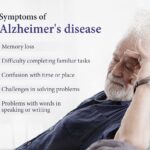Early Signs and Causes of Parkinson’s Disease
Parkinson’s disease is a neurological condition characterized by impaired movement due to decreased dopamine levels in the brain. Initial symptoms typically include tremors, loss of smell, and difficulties with coordination.
Although the exact cause of Parkinson’s disease is unknown, experts speculate that genetic mutations and exposure to environmental toxins are significant factors influencing its development. To learn more about the early indicators and underlying causes of Parkinson’s disease, continue reading.
Parkinson’s disease typically manifests gradually, often beginning with a slight tremor in one hand and a sense of stiffness in the body. As the condition progresses, additional symptoms emerge, and some individuals may even develop dementia.
Early indications of Parkinson’s disease encompass various symptoms:
- Changes in movement, such as tremors
- Coordination and balance issues leading to dropping objects or falling
- Loss of smell
- Altered gait, like leaning forward or shuffling while walking
- Facial expression rigidity due to nerve changes affecting facial muscles
- Voice tremors or a softer voice
- Reduced and cramped handwriting
- Sleep disturbances linked to restless legs and other factors
- Rapid eye movement sleep disorder, identified as a significant predictor according to a 2015 study
Movement symptoms typically initiate on one side of the body and progress gradually to affect both sides.
Additional common symptoms include mood alterations like depression, difficulties with chewing and swallowing, fatigue, constipation, and skin issues. Over time, some individuals may also experience dementia, along with delusions and hallucinations.
It’s important to note that experiencing these symptoms does not necessarily indicate Parkinson’s disease.
Several other conditions can present similar symptoms, such as Parkinsonism, head trauma, encephalitis, stroke, multiple system atrophy, and progressive supranuclear palsy.
Currently, diagnosing Parkinson’s disease can be challenging in its early stages due to its resemblance to other conditions, and there is no definitive test available for its detection.
Parkinson’s disease is a complex neurological disorder triggered by changes in the brain. While the precise cause remains unclear, scientists have identified several factors that contribute to its development:
- Low Dopamine Levels: Parkinson’s disease primarily stems from a decrease in dopamine levels. Dopamine is a neurotransmitter crucial for transmitting messages to the brain region that controls movement and coordination. When dopamine-producing cells in the brain deteriorate or die, movement control becomes impaired, leading to the characteristic symptoms of Parkinson’s disease. As dopamine levels continue to decline, symptoms typically worsen over time.
- Low Norepinephrine Levels: In addition to dopamine, Parkinson’s disease can also involve damage to nerve endings that produce norepinephrine, another neurotransmitter important for regulating blood circulation and other automatic bodily functions. Low levels of norepinephrine in Parkinson’s disease may contribute to symptoms such as stiffness, rigidity, tremor, anxiety, difficulty concentrating, dementia, and depression. This neurotransmitter deficiency may also explain why orthostatic hypotension—a sudden drop in blood pressure upon standing—is common among people with Parkinson’s disease.
- Lewy Bodies: Individuals with Parkinson’s disease often develop clumps of protein called alpha-synuclein or Lewy bodies in their brains. The accumulation of these abnormal protein deposits can lead to the loss of nerve cells, causing a range of symptoms affecting movement, thinking, behavior, and mood. This includes the potential development of Lewy body dementia, which shares similarities with Parkinson’s disease but is a distinct condition characterized by progressive cognitive decline and behavioral changes.
While these factors—low dopamine and norepinephrine levels, and the presence of Lewy bodies—are implicated in Parkinson’s disease, the exact mechanisms linking these changes in the brain to the onset and progression of the disease are still under investigation.
Understanding these underlying processes is crucial for developing more effective treatments and strategies to manage Parkinson’s disease and its associated symptoms.
Genetic factors play a role in Parkinson’s disease, with certain genetic changes being linked to about 10% of cases, particularly among individuals with early-onset disease. Despite these associations, Parkinson’s is not generally considered a hereditary condition.
Recent studies have also explored potential autoimmune connections. For instance, research from 2017 identified genetic links between Parkinson’s disease and autoimmune conditions like rheumatoid arthritis.
Moreover, a 2018 investigation in Taiwan highlighted that individuals with autoimmune rheumatic diseases had a 1.37 times higher likelihood of also having Parkinson’s disease.
Several environmental factors are known to increase the risk of developing Parkinson’s disease. These include past traumatic brain injuries, exposure to toxins such as pesticides, solvents, metals, and pollutants, as well as gender disparities (males are 50% more likely to develop the disease, although age-related risks for females may increase).
The typical age of onset for Parkinson’s is around 60 years, although 5-10% of cases begin earlier, before the age of 50.
Regarding racial factors, historical data suggested a lower prevalence of Parkinson’s disease among Black individuals compared to other ethnic groups in the United States.
However, experts now attribute this disparity to potential factors such as inadequate awareness about how the disease affects Black communities and disparities in healthcare access leading to misdiagnosis.
This underscores the importance of culturally sensitive healthcare practices and broader awareness campaigns to ensure equitable diagnosis and treatment for all individuals affected by Parkinson’s disease.
While it’s not currently possible to prevent Parkinson’s disease entirely, adopting certain lifelong habits may help mitigate the risk:
- Avoiding Toxins: Minimize exposure to potentially harmful chemicals such as herbicides, pesticides, and solvents. Steps to consider include:
- Using alternatives to products containing known toxins like paraquat.
- Avoiding unnecessary use of pesticides and herbicides.
- Taking precautions such as wearing protective clothing when exposure cannot be avoided.
- Avoiding Head Trauma: Protect yourself from traumatic brain injuries by:
- Wearing protective headgear during contact sports.
- Using helmets when cycling or motorcycling.
- Wearing seat belts while traveling in cars.
- Seeking prompt medical attention for any head injuries, and following medical advice to avoid further risks until cleared by a healthcare professional.
- Regular Exercise: Engaging in regular physical activity has been highlighted as beneficial in potentially preventing or managing Parkinson’s disease. A 2018 review noted that exercise can help maintain dopamine levels in the brain, which are crucial for movement and coordination.
- Dietary Considerations: Certain dietary choices may also contribute to reducing the risk of Parkinson’s disease:
- Turmeric: Incorporating turmeric into your diet, which contains curcumin—an antioxidant known to combat oxidative stress and prevent the clumping of alpha-synuclein protein in laboratory studies.
- Flavonoids: These antioxidants found in berries, apples, some vegetables, tea, and red grapes have been linked to a lower risk of developing Parkinson’s disease.
- Avoiding Aldehydes: Refrain from heating and reusing cooking oils like sunflower oil, as this can lead to the formation of toxic chemicals known as aldehydes. Research has suggested a potential link between aldehydes and Parkinson’s disease, particularly in foods like fried potatoes.
While these habits may help reduce the risk of developing Parkinson’s disease, it’s important to consult healthcare professionals for personalized advice and to stay informed about ongoing research into preventive strategies.
SEE ALSO: Best Foods for Parkinson’s Disease
Frequently Asked Questions About Parkinson’s Disease
How do people with Parkinson’s cope?
People diagnosed with Parkinson’s disease (PD) often undergo a range of emotions, including denial, shock, and discouragement. The Parkinson’s Foundation recommends several coping strategies:
- Education: Learn about Parkinson’s disease and focus on abilities rather than limitations.
- Communication: Maintain open communication with loved ones and healthcare providers.
- Exercise: Regular physical activity can help manage stress and improve overall well-being.
- Adaptation: Find new ways to adapt to changes brought about by the condition.
What is the life expectancy for Parkinson’s disease?
With advancements in treatment, individuals with Parkinson’s disease can expect a normal or near-normal life expectancy. Early diagnosis and effective management of symptoms play crucial roles in improving outcomes.
How does a person with Parkinson’s feel?
The experience of living with Parkinson’s disease varies from person to person, but common physical and emotional challenges include:
- Physical Symptoms: Unsteadiness, tremors, dizziness, stiff muscles, and nerve pain.
- Mental Health: Depression and anxiety are prevalent among individuals with Parkinson’s, affecting their overall quality of life.
Summary
Parkinson’s disease is a lifelong neurological condition characterized by progressive changes in the body.
While the exact cause remains unknown, genetic predisposition and environmental factors, such as traumatic brain injury and toxin exposure, have been strongly linked to its development.
While there is no definitive way to prevent Parkinson’s disease, adopting a healthy lifestyle that includes regular exercise, a balanced diet, and minimizing exposure to toxins may help reduce the risk.
Ongoing research continues to explore these factors and aims to improve understanding and treatment options for individuals affected by Parkinson’s disease.

A graduate of Computer Science and Information Management Technology. Diploma – Caregiving, Certificates – Dementia and Diabetes Awareness and Management. A researcher, blogger, songwriter, singer and acoustic guitarist. Born in an environment where natural talents such as healing are imparted at our natural birth. This natural talents of healing is the result of our genetic inheritance and the training from family environment.













